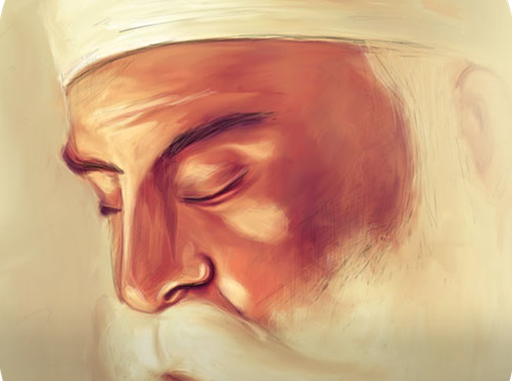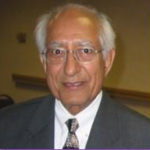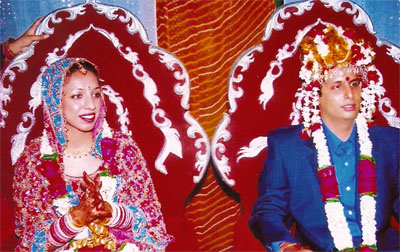

When Guru Nanak came to this world, paths to enlightenment were devoid of divinity; they were completely distorted towards unholy goals of the exploiters of people. The religious institutions had devised beauty shows with religious practices that were intended to attract innocent minds. For example, they invented deities with accompanying stories, idols with descriptions of their powers, recitations to invoke imaginary deities, and rituals that buttressed each other.
When Guru Nanak came into this world, humanity was in the midst of coming out of the realm of primitive homo sapiens, that was hitherto the animal world.
In their history, the people of that century were waking up from awful nightmares of animal life. As characteristic of human form, people were always engaged in fighting for food as the famines were the order of the day. People often lacked abilities to fight hunger and disease, and humanity was faced with those awful calamities on a regular basis. Their physical survival was challenged daily.
Basically, men were there to hunt for food and protect the family, while women were there only for bearing children.
It took thousands of years before those dreams of primitive times were coming to an end. Now, at the time of Guru Nanak, people were out of the dangers that the animal world faced, although their lives were still in the hands of homo-sapiens biology in their thinking. The people were only sluggishly advancing in their intellectual abilities along with taking care of their biological evolution.
With time, humanity was on its way to manage to rein on famine, plagues, or even heart diseases and some cancers. However, their minds would continue being overpowered by animal-like emotional tendencies. In the description of the human mind, Guru would still describe the condition of human beings as,
ਪਸੂ ਮਾਣਸ ਚੰਮਿ ਪਲੇਟੇ ਅੰਦਰਹੁ ਕਾਲਿਆ ॥ SGGS p. 1284
The human beings are nothing more than beasts, wrapped up in human skin; their minds were blackened within (with animal instincts).
Religions and Religiosities Before Guru Nanak
According to the Sikh theologian of the highest repute, Bhai Gurudas, as soon as human beings came out of the animal world, they began with formulating religions. Peoples invented religions that divided them, causing disputes and fights among and between the followers of both Judeo-Christian Religions of the West and Dharmic religions of Asia.
Thus, when Guru Nanak came to this world, paths to enlightenment were devoid of divinity; they were completely distorted towards unholy goals of the exploiters of people. The religious institutions had devised beauty shows with religious practices that were intended to attract innocent minds. For example, they invented deities with accompanying stories, idols with descriptions of their powers, recitations to invoke imaginary deities, and rituals that buttressed each other.
Clergies asked people to erect stunning buildings to house gods and promised accessibility to gods at precise times and places opened only through the expense of wealth, time, and inner energy. Altruism was perverted so that it only benefited clerics, their agents, and their business.
A class of religious leaders routinely concocted religious practices to thrust on people to serve many unholy interests. These interests were mutually supportive and were successful in designing a variety of concealed tricks to fool people who were seeking salvation.
Religious institutions were building cults of external marks and body wrappings to encourage murders and wars against those who did not toe the line, or who were members of competing enterprises.
Many other tricks were employed to speed a religion’s institutional agendas. For example, miracles were invented to convert people and influence human behaviors. The religious myths were invented to answer real questions and then safeguarded those miracles and myths by un-testable threats and promises.
People were asked to invest a massive amount of wealth, time, and mind in ritualistic illusions and also in corrupted beliefs such as, either converting others or serving clergy with wealth and flesh that would guarantee heavens no one had ever seen.
Above all, the self-appointed clerics used horrific fears to ensure compliance with all their tricks.
Guru Nanak Began His Ministry
Guru Nanak came out of his enlightening meditation at the Vein River with fervent zeal to spread what he said was inspiration from the ONE Creator. He then taught that human life was a result of the millions of years of history as well the experience from numerous life cycles of birth and death of their consciousness.
In the very first stanza of his very first composition JAP, Guru Nanak warned against religiosity consisting of practices promoted by the clergy class.
Liberation Not After-Life
Before Guru Nanak, and continued to date, we are told to look forward to achieving the goals of eternal peace and spiritual heights to be awarded in the next life, the life after the death of human existence. Both Judo- Christian religion of the west and Dharmic religions of the East promised the life of the fulfillment in the heavens reached only after death. Guru Nanak refused to accept that.
ਮੂਏ ਹੂਏ ਜਉ ਮੁਕਤਿ ਦੇਹੁਗੇ ਮੁਕਤਿ ਨ ਜਾਨੈ ਕੋਇਲਾ ॥ SGGS p. 1292
If You award me the salvation from all pains after I am dead, no one will know that I am liberated.
Throughout history, religions and ideologies did not sanctify life itself. They always sanctified something above or beyond earthly existence and were consequently quite tolerant of death. Indeed, some of them have been downright fond of the Grim Reaper. Because Christianity, Islam, and Hinduism insisted that the meaning of our existence depended on our fate in the afterlife, they viewed death as a vital and positive part of the life. Humans died because God decreed it, and their moment of death was a sacred metaphysical experience exploding with meaning to be realized after death.
When a human was about to breathe his last, this was the time to call Brahmans, priests, rabbis, Sikh granthis and shamans, to draw out the balance of life, and to embrace one’s true role in the universe. Just try to imagine Christianity, Islam, or Hinduism in a world without death – which is also a world without heaven, hell, or reincarnation. Modern science and modern culture have an entirely different take on life and death. They do not think of death as a metaphysical mystery, and they certainly do not view death as the source of life’s meaning. Rather, for modern people, death is a technical problem that the scientists of today are trying to solve, as people do not want to die to get rewards for their good deeds. Lengthening the human lifespan is a major thrust of scientific research today. We have already tripled human life span since the times of Guru Nanak.
In reality, however, humans do not die because the rewards and punishments for their deeds in this life are waiting to be fulfilled. Humans die because modern medicine could not save them from some biomedical glitch. The heart stops pumping blood. The main artery is clogged by fatty deposits. Cancerous cells spread in the liver. Germs multiply in the lungs and elsewhere. Nothing metaphysical about it. It is all currently insoluble technical problems. When some problems indeed are solved, humans begin to live longer. With the advances in technology, life expectancies are expanding from 20 yrs. at one time to now nearly a century in some societies. And life span of two century is within sight.
Sachiara As Human Life objective
In the JAP composition, Guru Nanak asks for becoming Sachiara meaning to be truthful as the objective of this human life. He used the Sachiara term right in the first stanza in the Guru Granth. Later, in the Guru’s hymns, other terms such as Mukta, Panch, Parvan, Pardhan, Gurmukh, are also used for achieving the same or a similar goal.
When asked as to how to achieve the human goal he prescribed, Guru Nanak answered the question by saying that one becomes Sachiara essentially when, under the guidance of the divine wisdom, one succeeds in suppressing and abandoning narcissism in favor of full commitment in Hukam, inculcation of the consciousness within that recognizes Divine blueprint for its creation.
ਕਿਵ ਸਚਿਆਰਾ ਹੋਈਐ ਕਿਵ ਕੂੜੈ ਤੁਟੈ ਪਾਲਿ ॥ ਹੁਕਮਿ ਰਜਾਈ ਚਲਣਾ ਨਾਨਕ ਲਿਖਿਆ ਨਾਲਿ ॥੧॥ SGGS p. 1.
How may one become Sachiara, the truthful? And how may the wall of falsehood (veil of illusion) be torn away? Says Nanak, walk on the path of Hukam, the laws of creation that are written in the systems of the creation, i.e., the Way of His Will.
Hukam may be simply defined as Creator’s blueprint for the creation as well as for its management. Hukam is a self-regulative teleological principle; the purpose of which is to serve rather than become the cause by which it may arise.
Sachiara begins to observe and appreciate Hukam in the working of the living environment as opposed to it being an illusion or imagination and achieved after death.
(The author is Professor and Chair Emeritus, University of North Texas Health Science Center. He can be reached at japji2050@gmail.com)





Be the first to comment